Central and South Central Florida Peach Cultivars From the Horticultural Sciences Department, Florida Cooperative Extension Service Institute of Food and Agricultural Sciences, University of Florida
Table adapted from Florida Peach and Nectarine Varieties, University of Florida * For northern and north central Florida cultivars, refer to https://edis.ifas.ufl.edu/publication/mg374 Peach varieties developed at the Florida Agricultural Experiment Station, an agricultural and natural resource research program of the University of Florida’s Institute of Food and Agricultural Sciences (IFAS), are licensed by Florida Foundation Seed Producers, Inc. 1 Rootstock: All stone fruit grown in Florida are grafted to rootstock because of the presence of the peach root-knot nematode (Meloidogyne floridensis). ‘Flordaguard’ is a nematode-resistant rootstock that is currently recommended for both commercial and dooryard production. The distinctive red leaves of ‘Flordaguard’ allow growers to easily identify it in the nursery as root suckers emerge during the first 2 to 3 years after planting. 'Sharpe' rootstock can also be used as a peach root-knot nematode-resistant rootstock; however, it has been criticized for small fruit size. The rootstock 'MP29' with resistance to peach root-knot nematode and tolerance to peach tree short life and oak root rot has been released for use in the more northern areas of the state. Several other rootstocks are being tested in conjunction with the USDA-ARS Peach Rootstock Breeding Program in Byron, GA. For more information on rootstocks for stone fruit, reference https://edis.ifas.ufl.edu/hs366. 2 Florida Peach Rootstocks
Fruit Developmental Periods: Early ripening ability is an important trait for Florida stone fruit cultivars. The period from fruit set to maturity, when the fruit can be harvested, is called fruit developmental period, or FDP. The FDP of current Florida peach cultivars is quite short: some of them will be mature and ready for harvest as soon as 60 days from fruit set. The FDP can vary with temperature during the growing season, with warmer temperatures compressing and cooler temperatures lengthening the FDP. Therefore, the FDP varies from season to season, and the numbers presented are averages over a number of years. 2 Low-chill cultivars: Low-chill peach cultivars are those that require fewer chill units (100–250 chill units) than those cultivars that originate from temperate climates. Chill units are variable across the state of Florida and decrease as one moves south in the state. The chilling unit requirement is not always related to the FDP, and some cultivars require large amounts of chilling yet have a short FDP. For example, ‘UFGlo’ requires 450 chill units yet has an FDP of 80 days, while ‘UFBest’ requires less than 150 chill units and has an FDP of 95 days. 2 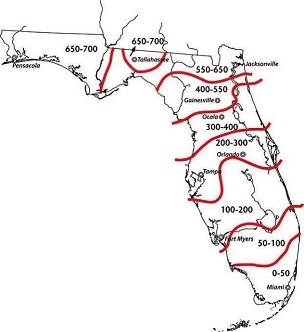 Fig. 1  Chill units accumulated (between 32°F and 45°F) through February 10 in 75% of winters The University of Florida Institute of Food and Agricultural Science (UF-IFAS) tabulates chill hours (as opposed to average minimum temperature) in more detail for Florida and their map can be used to identify the expected range of chill hours for areas in Florida. Be sure to match your plants by Hardiness Zone and by chill hours if you live in Florida! There are many sources from which to gather this data, including the Florida Automated Weather Network FAWN (https://fawn.ifas.ufl.edu/). The state of Florida has several zones with different chill unit accumulations (Fig. 1) to aid in selecting a peach cultivar. 2 Selection of cultivars for south and central Florida 100-150 Chill hours 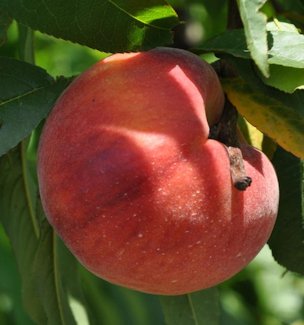 Fig. 2 'UFSun' (U.S. Patent PP14,764) 'UFSun' is a peach variety with a low winter chilling requirement of approximately 100 to 150 chill units (cu). Self-pollinating. Trees of 'UFSun' are of large size and highly vigorous with a semi-spreading growth habit. Trees of 'UFSun' regularly bear heavy annual crops of early season fruit which are medium size for its ripening season. Ripens in late April to early May. Fruit of 'UFSun' are very firm with a yellow, non-melting flesh which are clingstone. The fruit sweetens longer on the tree. Fruit of 'UFSun' are uniform and substantially symmetrical in shape and have an attractive 50 to 60% red skin with darker red stripes. Zone 9 First harvest: Around April 22, near Gainesville with a FDP of 80 days. 1 100 Chill hours  Fig.3 'UFBest' (U.S. Patent Pending) ‘UFBest’ is a peach cultivar released in 2012 by the UF breeding program. This non-melting-flesh cultivar produces heavy annual crops of large fruit. ‘UFBest’ fruit develop 95–100% red skin over a yellow ground color, and the flesh is yellow with clingstone pits. 1 First harvest: Around April 20, near Gainesville with a FDP of 85 days. 1 150 Chill hours 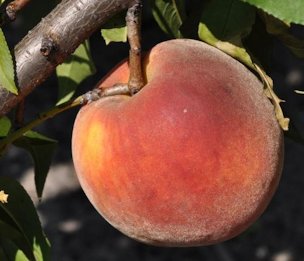 Fig. 4 'Tropic Beauty' A standard for lower central Florida and upper south Florida. ‘TropicBeauty’ is a non-patented cultivar released jointly by the University of Florida and Texas A&M in 1989. The medium-sized, semi-freestone fruit have yellow, melting flesh and develop 70% blush over a yellow ground color. ‘TropicBeauty’ ripens between ‘UFSun’ and ‘UFOne’ and has a FDP of 89 days. Ripens in mid-May. Excellent flavor. Self-pollinating. 2 150 Chill hours  Fig. 5 'UFBeauty' (U.S. Patent PP14,784) 'UFBeauty' is a Self-pollinating peach variety with a low winter chilling requirement of approximately 200 chill units (cu). Trees of 'UFBeauty' are of large size and highly vigorous with a semi-spreading growth habit. UFBeauty is one of the most disease resistant and one of the sweetest non-melting varieties. Fruit sweetens longer on the tree. Trees of 'UFBeauty' regularly bear heavy annual crops of early mid-season fruit which are medium large for its ripening season. Fruit of 'UFBeauty' are very firm with a yellow, non-melting flesh which are clingstone. Fruit of 'UFBeauty' are uniform and substantially symmetrical in shape and have an attractive 90 to 100% red skin with darker red stripes. Ripens mid May. Zone 9 First Harvest: Around April 29 near Gainesville, FL with a FDP of 82 days.Cropping of ‘UFBeauty’ has been unreliable in south Florida when night temperatures during the bloom period are higher than 57°F (14°C). 1 150 Chill hours 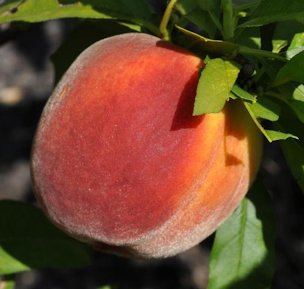 Fig. 6 'UFOne' (U.S. Patent PP21,607) 'UFOne' is a peach variety with a low winter chilling requirement of approximately 150 chill units (cu). Trees of 'UFOne' are of medium size and moderately vigorous with a semi-spreading growth habit. Trees of 'UFOne' are self-fertile and regularly bear heavy annual crops of early season fruit which are medium large for its mid-early ripening season. Fruit of 'UFOne' are very firm with a yellow, non-melting flesh which are semi-clingstone. Fruit of 'UFOne' are uniform and substantially symmetrical in shape and have an attractive light red color over 40% of skin. Fruit of 'UFOne' which is exposed to sunlight has a higher degree of enhanced red skin. First Harvest: Around April 10 near Gainesville, FL with a FDP of 95 days. 1 150 Chill hours 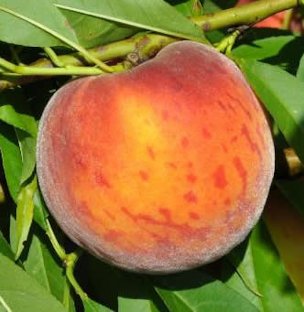 Fig. 7 'Flordaprince' A standard for lowest chill and early ripening. High red skin color. ‘Flordaprince’ is a very heat resistant variety with firm yellow flesh and red blush skin that ripens in May. Self-pollinating. ‘Flordaprince’ was released by UF in 1982 and its fruit have melting flesh. It has been a standard low-chill peach cultivar worldwide and is one of the earliest ripening. The fruit develop 80% red blush with dark red stripes over a yellow ground color. ‘Flordaprince’ fruit are large, uniformly firm, and yellow, with semi-clingstone pits. The fruit ripen about 7–10 days earlier than ‘TropicBeauty’ in Gainesville, Florida with an FDP of 78 days. 2 150 Chill hours 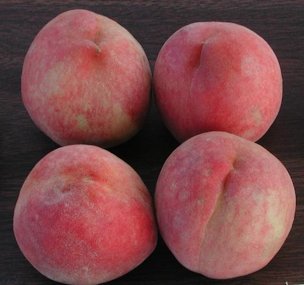 Fig. 8 'Flordaglow' ‘Flordaglo’ is a melting-flesh cultivar released by UF in 1988. The fruit develop 50–60% red blush with stripes, over a white ground color. ‘Flordaglo’ fruit are early ripening, semi-clingstone, and are bacterial spot resistant. Fruit ripen in early May, approximately 78 days after full bloom. ‘Flordaglo’ fruit is ideal for backyard or u-pick operations due to the melting flesh texture and its tendency to show bruises and abrasions easily. 2 It has pink fruit outside fruit, white inside. Requires about 200 chill hours. A sweet, low acid peach for Central Florida. Freestone. Ripens mid-May. Self-pollinating. 200 Chill hours 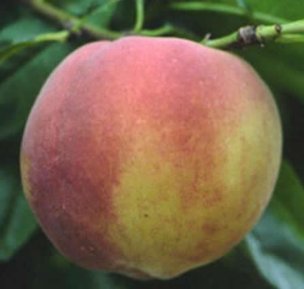 Fig. 9 'UFGold' (U.S. Patent PP10,315) The major advantages, of 'UFGold' are a low chilling requirement, early ripening, a non-melting flesh and an attractive skin. 'UFGold' has fruited where the coldest month average 16 to 17C and in colder locations in the absence of spring frosts. This corresponds to the area from Orlando to Leesburg in Florida. Full bloom generally occurs in early February, and the fruit ripens in late April to early May in this area, about 80 days after full bloom and about five days before 'Flordaglo'. Trees are semi-spreading and are easily pruned to a vase shape. Trees set a high number of flower buds, have few blind nodes, and exhibit little bud failure. Fruit have averaged about 110 grams and 2 1/2 inches diameter where fruit were thinned 6 to 8 inches apart. Fruit shape is nearly round and flesh contains little red on non-stressed trees. Flesh is non-melting and clingy with a little separation from the stone when soft ripe. Pits have shown little tendency to split even when crop loads were low. Leaves have small, reniform petiolar glands. Flowers are showy and pink. Anthers are mostly yellow with little anthocyanin and pollen is bright yellow and abundant. Leaves and fruit are moderately resistant to bacterial spot. First Harvest: Around May 1 near Gainesville, FL with a FDP of 80 days. 1 225 Chill hours 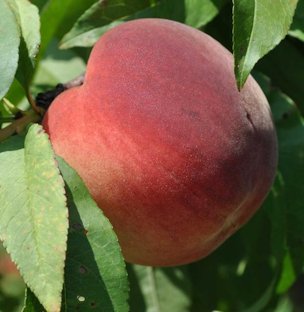 Fig. 10 'TropicSnow' ‘TropicSnow’ was jointly released by UF and Texas A&M in 1989. Its fruit have white, melting-flesh, semi-freestone pits. ‘TropicSnow’ fruit develop 40–50% red blush over a creamy white background and have very low acid combined with excellent sweetness. ‘TropicSnow’ has a FDP of 90–97 days. Self-pollinating. 2 Further Reading Florida Peach and Nectarine Varieties, University of Florida pdf Rootstocks for Florida Stone Fruit, University of Florida pdf Florida Peaches, Florida Foundation Seed Producers ext. link List of producers licensed to propagate the stone fruit varieties developed by the University of Florida pdf Back to Peach Page |
||||||||||||||||||||||||||||||||||||||||||||||||||||||||||||||||||||||||||||||||||||||||||||||||||||||||||||||||||||||||||||||||||||||||||||||||||||||||||||||||||||||||||||||||||||||||||||||||||||||||||||||||
| Bibliography 1 "Florida Peaches." Florida Foundation Seed Producers, www.ffsp.net/varieties/peach/. Accessed 5 Sept. 2014, 10 Apr. 2019. 2 Sarkhosh, Ali, et al. "Florida Peach and Nectarine Varieties." Horticultural Sciences Dept., (originally published in 1995 as "Peaches and Nectarines for Central and North Florida), Circ. 1159, UF/IFAS Extension, Original pub. Nov. 1995, Rev. May 2013, June 2016 and Oct. 2018, AskIFAS, doi.org/10.32473/edis-mg374-2013, edis.ifas.ufl.edu/mg374. Accessed 16 Feb. 2017, 2 Apr. 2019. Photographs Fig. 1 "Chill units accumulated (between 32°F and 45°F) through February 10 in 75% of winters." Alternative Opportunities for Small Farms: Peach and Nectarine Production Review, UF/IFAS, AskIFAS, edis.ifas.ufl.edu/ac018 Accessed 4 Apr. 2019. Fig. 2,3,4,5,6,7,8,9,10 "'UFSun', 'UFBest', 'Tropicbeauty', 'UFBeauty, 'UFOne', 'Flordaprince',' Flordaglo', 'UFGold', 'Tropicsnow'." UF/ IFAS Extension, AskIFAS, edis.ifas.ufl.edu/mg374. Accessed 4 Sept. 2014. Published Feb. 2013 LR. Last update 12 Feb. 2023 LR |
||||||||||||||||||||||||||||||||||||||||||||||||||||||||||||||||||||||||||||||||||||||||||||||||||||||||||||||||||||||||||||||||||||||||||||||||||||||||||||||||||||||||||||||||||||||||||||||||||||||||||||||||